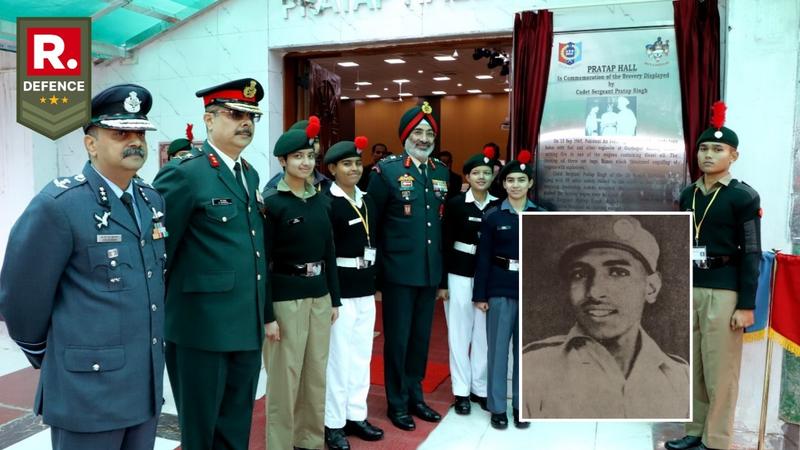Published 20:08 IST, December 30th 2024
DG NCC Pays Tribute to Ashok Chakra Awardee Sgt. Pratap Singh, 1965 War Hero
The National Cadet Corps (NCC) inaugurated ‘Pratap Hall’ at the 10th Punjab Battalion NCC Headquarters in Gurdaspur to honor Sgt. Pratap Singh.

New Delhi, India- In a solemn and proud moment for the National Cadet Corps (NCC), Director General NCC, Lieutenant General Gurbirpal Singh, inaugurated the ‘Pratap Hall’ at the 10th Punjab Battalion NCC Headquarters in Gurdaspur. The hall is dedicated to the memory of Sergeant Pratap Singh, the valiant NCC cadet who was awarded the Ashok Chakra Class III (Shaurya Chakra) in 1966 for his unparalleled bravery during the Indo-Pakistani War of 1965.
Cadet Sergeant Pratap Singh's Valour
The inauguration ceremony brought together NCC cadets, veterans, dignitaries, and members of the local community to pay homage to Sgt. Pratap Singh. The hall stands as a testament to his heroic actions on September 13, 1965, when he led a team of 59 NCC cadets to avert a catastrophic disaster at the Gurdaspur Railway Station.

During a Pakistani air raid, four fighter jets targeted a goods train carrying diesel oil and ammunition. The resulting inferno posed an immense threat to the station, surrounding civilian areas, and the Indian Army’s supply chain. Amidst the chaos, Sgt. Pratap Singh displayed exceptional leadership by organizing his fellow cadets to detach the unaffected wagons and push the burning ones to a safe distance, preventing a major explosion.
His selfless actions saved countless lives and ensured the continuity of India’s frontline operations during the war. For his extraordinary courage and leadership, Sgt. Pratap Singh was awarded the Ashok Chakra by President Dr. S. Radhakrishnan in 1966.
NCC's Dynamic Role in National Defense
The event also highlighted the contributions of the NCC during times of national crisis, particularly during the Indo-Pakistani Wars of 1965 and 1971. DG NCC noted the critical role played by cadets, who served as the second line of defence during these wars.

NCC cadets assisted ordnance factories in supplying arms and ammunition, participated in patrols to capture enemy paratroopers, and worked with civil defence authorities in rescue and traffic management operations. Their dedication and patriotism provided invaluable support to India’s war effort.
A Revised Vision for the NCC
Following the wars of 1965 and 1971, the NCC syllabus was revised to reflect a broader vision. While military training remained a component, greater emphasis was placed on leadership development, social service, and youth management. This shift aimed to cultivate a generation of young leaders equipped to contribute to both national security and societal progress.

DG NCC emphasized that the ‘Pratap Hall’ symbolizes the NCC’s commitment to nurturing courage, leadership, and patriotism in the nation’s youth, inspired by the legacy of heroes like Sgt. Pratap Singh.
Honouring Legacy and Inspiring Generations
The hall features an exhibition chronicling Sgt. Pratap Singh’s heroic actions, the role of NCC cadets during wartime, and the gallantry of countless cadets who served the nation. The unveiling of Sgt. Pratap Singh’s portrait and a commemorative plaque marked the emotional high point of the ceremony.

Speaking at the event, DG NCC stated, “Sergeant Pratap Singh’s bravery is a shining example of how young individuals, with courage and determination, can make a monumental difference. Pratap Hall will inspire countless cadets to uphold the values of leadership and service to the nation.”
Updated 20:08 IST, December 30th 2024




